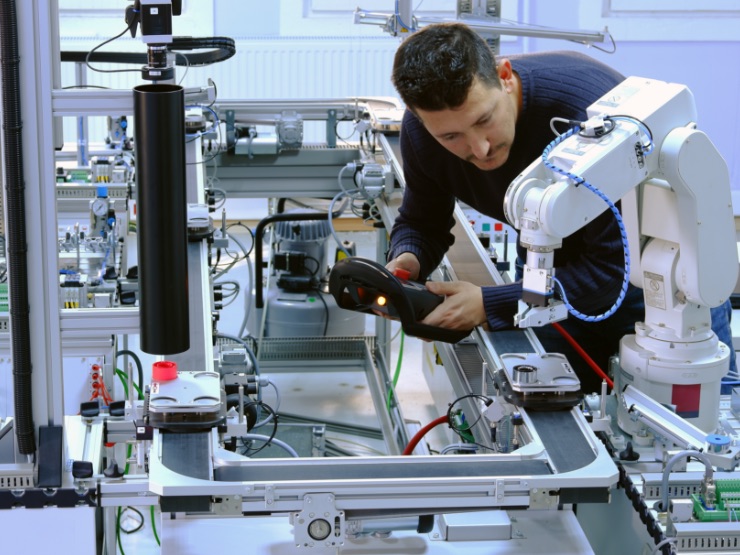Robotic Process Automation: What you need to know in 2020
04 December 2020

Robotic Process Automation: What you need to know in 2020
What is automation?
Topics in this article
Humans have strived to automate work since ancient times, but automation as we know it only really began during the industrial revolution. The word automation means the use of any technique to make an apparatus, process or system operate with less manual labour. In other words, automation is all about optimization and efficiency. In the digital era, we mainly talk about business processes automation (BPA) or digital transformation.
Robotic process automation
With advancements in artificial intelligence (AI), robotic process automation (RPA) became an emerging type of automation as part of BPA. So, what’s the difference between RPA and BPA?
BPA deals with the automation of business processes on a more holistic end-to-end level, whereas RPA is a subset of BPA. RPA is a type of automation that uses robots or ‘bots’ to perform tasks through a user interface. In other words, RPA automates tasks by simulating actions a human would typically perform, such as copy-pasting values from documents, checking emails, opening attachments and looking up information on the internet.
Bots can perform tasks based on a schedule or predefined trigger (unattended bots) or they can be deployed to workstations and be activated by employees on-demand (attended bots). With modern low-code RPA platforms, building bots has become much easier and can often be achieved with little to no coding skills. The beauty of RPA is that it uses a microtask approach and works over the top of existing systems. It can often be expensive and time consuming to change existing processes or develop the technical capabilities needed to automate processes within existing technologies. RPA bypasses these challenges by working through existing interfaces and interacting with user interfaces just like a human would. In other words, if a human can do it, a robot can probably be trained to do it as well.
How is automation impacting us?
In the fast-changing, disruptive digital world, businesses must continuously be on the lookout for opportunities to enhance employee productivity and improve customer experience to enable them to keep up with the competition. RPA can deliver significant cost savings by increasing the capacity or volume of tasks that can be performed. With RPA, workers can minimize the time spent on repetitive tasks, allowing them to get more done in less time. One result of this is that some employees have found themselves made redundant or needing to learn new skills. The fear of automation is real, and organizations need to find ways to manage this.
Automation may lead to new job creation in automation supervision or it could free up employees to focus on higher-value tasks. For example, spending more time interacting with customers can lead to better customer experience. Similarly, spending more time on tasks requiring creativity or judgement-based decisions can lead to the development of entirely new products, services or ways of doing business.
RPA can also lead to improved quality and compliance. Bots are designed to perform tasks in a standardized way and will perform them the same way each time. They don’t suffer from fatigue and aren’t prone to manual errors. Compliance related activities are often arduous and not seen as a priority by employees who are under pressure to perform their primary tasks. In this context, bots can be used to ensure compliance processes are followed, as well as alleviate the burden on employees.
The future of automation
Gartner has described RPA as ‘one of the fastest-growing segments of the global enterprise software market’ and has identified ‘hyper-automation’ as one of the top 10 strategic technology trends. Developments in RPA, AI and the combination of the two is predicted to enable the rapid automation of virtually any repetitive task. Automation is here to stay.
Determining what to automate to achieve the best possible return on investment is often one of the first steps in the automation journey. Up until now, this has mostly been a manual time-consuming exercise performed by business analysts who document as-is processes and try to identify optimization opportunities by estimating volumes and measuring average handling time. The limitation of this approach is that it is so involved, and therefore costly, that it often doesn’t go into the necessary level of detail needed to discover smaller processes or tasks, the ‘hidden inefficiencies’. These fly under the radar but are nonetheless ideal candidates for quick win automation. Process mining, which promises the automation of process discovery, is the holy grail of many RPA platform vendors. Imagine if you could deploy intelligent bots that would observe what your employees are doing and use AI to identify patterns of repetitive tasks, measure volumes and processing times, and make suggestions for automation.
There’s also more potential in making RPA even more capable through the use of AI. Many RPA platforms already use AI, such as optical character recognition - extracts text out of scanned documents or images - or voice recognition. The use of AI in RPA is expected to rapidly increase beyond just coded rule-based decisions making by leveraging machine learning. This can create computer cognition that learns from data and can emulate human decision-making, something that can’t be formulated as a set of rules.
NTT Ltd. Experience
NTT Ltd. is a leading global technology services company. We strive to work with our clients to achieve business outcomes through intelligent technology solutions.
With our automation solutions we can help you:
- assess your automation maturity and define automation roadmap
- discover and assess automation opportunities
- adopt automation technology
- document, develop, and optimize automated processes
- monitor and manage automation


